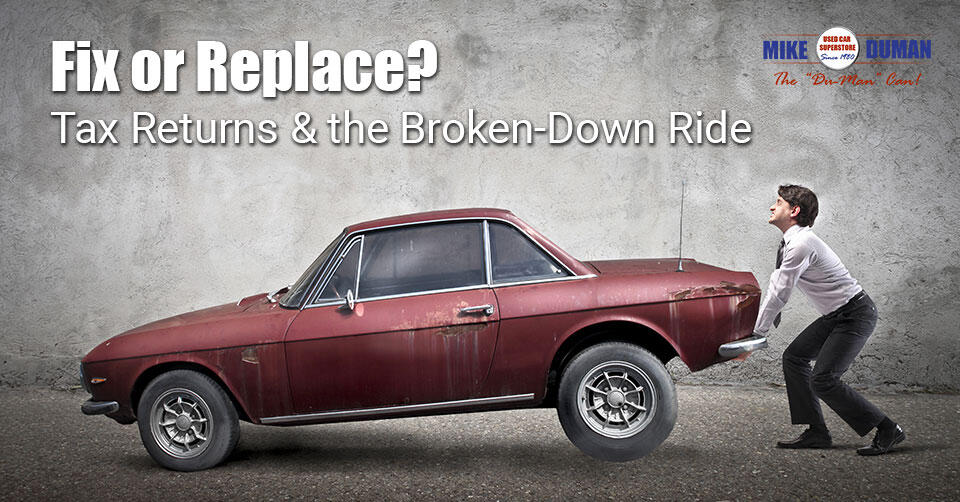
Tax time is here and you are looking at getting a decent chunk of change on your return. You start thinking about all the things you can buy with your return, but then your concentration is broken by the sound of your old hooptie quietly rusting in the driveway. Though it is not pretty, it has gotten you to work safely (*knock on wood), gotten the kids to practice, and even made a few trips to the beach. The old grocery-getter has seen better days; you keep a pair of well used jumper cables in the back seat, and duct tape is keeping the rear-view mirror from falling off in traffic. It is possible that you are thinking of adding auto repair to your resume of skills! Uncle Sam’s refund will be enough to cover replacing it outright, but there is a certain charm to your whip that you don’t want to part with. So, the question remains, replace or repair.
Maybe It Is Cheaper to Keep Her
Are you on year two of your 36-month car loan? You must figure in the cost of paying off that loan, or adding the remainder to a new loan. Are you looking at racking up more debts and expenses in the near future? Are you expecting a baby, or do you have student loans coming due? Have you already recently dumped an obscene amount of money into larger repairs that will keep your car running for the next year? Consider the mechanical problems that plague your car today. Do you just need a new battery? Are you looking at replacing the tires? Such repairs are inexpensive and can be conducted by the owner. Are your problems mostly of a cosmetic nature? Do you have ripped seats, torn carpet or a faded paint job? Consider using the money at a detailing center or spend a weekend with good car cleaning polish to bring back the old luster. Write a detailed list of every problem your current car is experiencing. Contact your auto mechanic, body shops, or upholstery shops to get quotes for repair, then look at the book value of your car. If the car repair estimate is less than half of the cost to replace your car, it only makes sense to make the necessary improvements and keep your car.
Maybe It Is Time to Say Farewell
On the other hand, it might just be time to trade your old car for something newer. Did you buy the car back in 2003, and it has been paid off since 2008? Do you have 250,000 miles on the old ride, with a lot of repair work on the horizon? Is this car your sole means of transportation? Is the car still safe for passengers, or will it possibly leave you stranded on the side of the road in an unsavory neighborhood with your small children? If the old wagon has seen the inside of the car repair shop more than your driveway, it’s time to unload the burden. Spending $2,000 a year to keep a $3,000 car on the road is a bad financial investment. At this point it is time for you to start looking for another car. Consider how much you are getting back for your tax return, and how much you can pay if you must incur a car payment. If you’re spending $2000 a year to keep it on the road anyways, that’s $166 a month that you could be paying for a new car. It is far more fiscally responsible to improve your situation.
Take a hard look at your situation. If your tax refund is enough to put a down payment on a car and you are reading this blog, chances are that it is in your best interest to do so. High mileage cars rack up maintenance costs very quickly. Before you get into the bind of sinking more money in your car than it is worth, free yourself of the beast. If your only real complaints involve visual appeal, consider saving the money until you have enough to afford the replacement car you really want, without the payment. Get a few car repair quotes and stick with ol’ reliable. Either way, be sure to take into account all the savings and expenditures that are involved in keeping or replacing your car, including maintenance, insurance, and property taxes. Make a well informed decision, and good luck!
